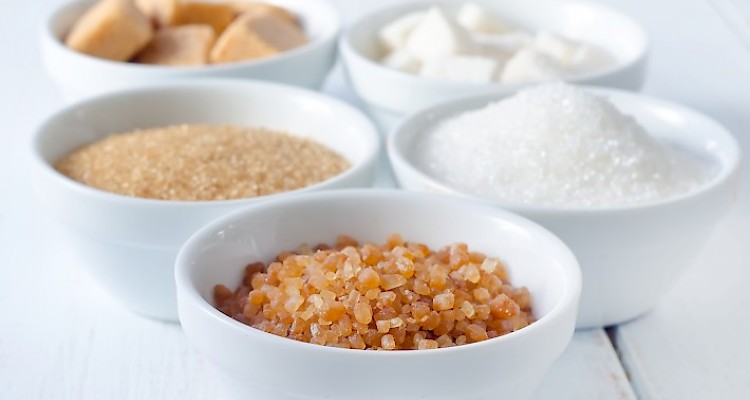The sweet taste is our most natural, harmonious taste. In previous entries, I’ve talked about healthy sweets and unhealthy sweets. Today, however, I’d like to talk about sweeteners. Sweeteners in beverages are absorbed into the blood more quickly and tend to be more harmful. Compare the difference in feeling a sweetened beverage with a homemade apple pie.
There are different types of sugars that come from foods. There are complex sugars called polysaccharides, and simple sugars known as mono/disaccharides. The main sources of polysaccharides are grains, beans, and sweet-tasting vegetables. These sugars are broken down slowly in the digestive system and create more alkaline blood. There are two main types of simple sugars: disaccharides and monosaccharides. The major disaccharides are sucrose (i.e., white sugar), lactose (i.e., milk-sugar), and maltose (i.e., grain sugar). The major monosaccharides are glucose and fructose. Simple sugars are quickly absorbed into the bloodstream and create a more acidic condition in our blood. Glucose can be metabolized by every cell in the body, whereas fructose can only be metabolized in the liver. The following lists help with determining healthy sweeteners and offer some suggestions for readjusting cravings and habits for more healthy sweets.
Order of Healthy Sweets and Sweeteners
—Grains and vegetables with a naturally sweet taste
Chewing grains brings out their natural sweetness because the complex carbohydrates begin breaking down to simple sugars in the mouth. Grains get sweeter the more you chew them. Cooking brings out the natural sweetness in vegetables (onions/leeks, carrots, cabbage, daikon, sweet potato, winter squash, and parsnips are especially sweet when cooked or puréed for soup).
—Grain-based sweeteners such as brown rice syrup or barley malt
When sprouted, complex carbohydrates in grains break down to simple sugars, and when concentrated become a sweetener that is the most gentle on the body.
—Maple syrup
Maple syrup, though very concentrated, is still healthier than other sweeteners.
Use the Following Sweeteners Sparingly, or Avoid
—Cane sugar and/or honey
—Fructose-based sweeteners such as high-fructose corn syrup and agave nectar
Fruits have fructose, but they also contain fiber, minerals and vitamins, which aid in the digestion and absorption of the fructose. When fructose is removed from its source and taken out of context, it places stress on the liver. Since the 80s when the food industry switched from using sugar to high-fructose corn syrup, obesity and diabetes have dramatically increased.
—Tropically sourced sweeteners such as coconut sugar and processed stevia leaf sweetener
Tropical sweeteners in tropical climates are fine, but in temperate climates, these sweeteners interfere with the body’s metabolism and ability to eliminate toxins.
—Artificial sweeteners
Artificial sweeteners are the worst of them all because they cause cravings for other unhealthy foods, and interfere more strongly than tropical sweeteners with the body’s ability to eliminate excess. Artificial sweeteners cause a variety of health problems, which include weight gain and cancer.
Sugar or cocaine-which is more addictive? Very few people manage to give up sugar entirely. To return to a more natural palette for sweetness, consider the following steps.
—Reduce or eliminate foods the following foods: meat, poultry, eggs and hard cheese, hard, dry, baked or fried foods (cookies, crackers and chips), and salty foods. All of these foods cause unhealthy sweet cravings.
—Increase naturally sweet foods such as grains, sweet vegetables, and fruits.
—Substitute brown rice syrup, followed by barley malt, followed by maple syrup.
—Chew your food well. Foods with complex carbohydrates become sweeter the more you chew them, which brings out the natural sweetness from within. Chewing also helps with tasting and enjoying all of the layers and complexity in foods and begins the digestion process.













































